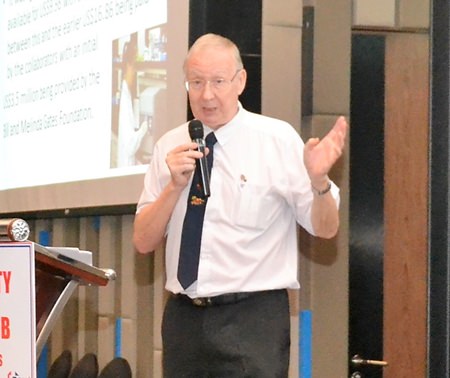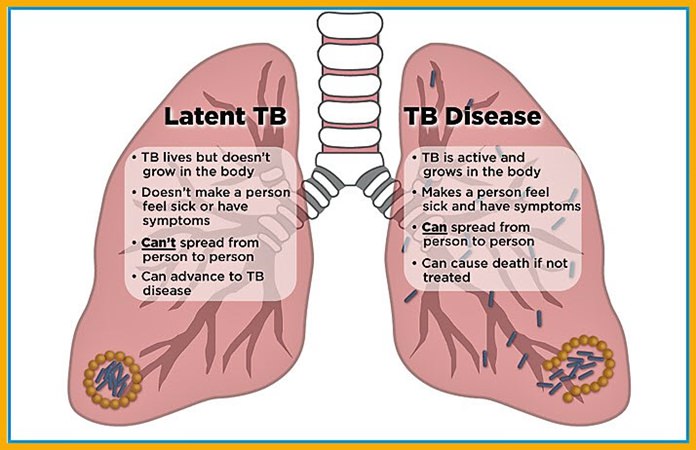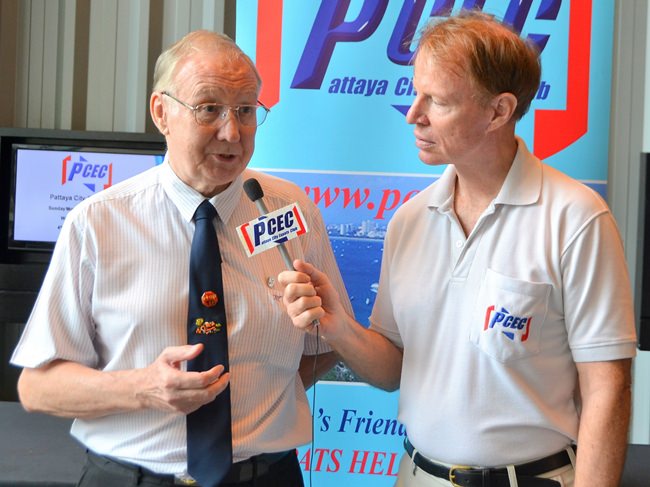
TB or not TB was how our speaker began his quite thorough and enlightening talk on Tuberculosis: its history, description, dangers and current status. Of course, the take on Shakespeare’s famous ‘to be or not to be’ line was used as a clever lead in to his talk, commenting that the famous author actually made mention of the disease in one of his famous tragedies. Shakespeare, however, used a different name for it, i.e. Scrofula, which is a particular tuberculosis of the lymph nodes.
 After the usual announcements and disclaimers, the MC introduced the speaker, Andy Barraclough. Previously, Andy captivated his PCEC audience with his talk on Dengue Fever. At the end of that presentation, he asked the audience about his next topic and they overwhelmingly wanted to know about the dangers of TB and the renewed fight against it.
After the usual announcements and disclaimers, the MC introduced the speaker, Andy Barraclough. Previously, Andy captivated his PCEC audience with his talk on Dengue Fever. At the end of that presentation, he asked the audience about his next topic and they overwhelmingly wanted to know about the dangers of TB and the renewed fight against it.
He returned to give us a brief overview of TB (Tuberculosis), why elderly (over 65) Europeans (especially Brits and Australians) but North Americans too, should remember their school milk days, the relation between HIV/AIDS and TB, and the role of the new diagnostic tests.
Andy made a distinction between latent TB and active TB. Many people, especially older persons, have latent TB because in their youth, milk served at school was not pasteurized, thus tubercular cow’s milk was served. Latent TB is not a problem because healthy immune systems keeps it “locked” up. Thus, there are no symptoms and it is not contagious to others. But, if the immune system becomes weak, the latent TB can become active.
TB is a bacterial disease usually affecting the lungs which has been known since ancient times. For most of the twentieth century it was in steady decline to such an extent that by the 1990s public health control programs for TB in many countries had fallen into neglect, with little funding, virtually no research and scant attention. TB is contagious to others if they breathe the droplets that come from a person with active TB when they are coughing.
In the mid 1990’s there was a sudden sharp increase in the number of TB cases and subsequent deaths resulting from it. TB was back with a vengeance, and Thailand became classified as one of the 22 ‘high burden’ countries for TB. It took some time to establish that this resulted from a combination of the sudden onset of the HIV/AIDS pandemic, the emergence of drug resistant TB, and vastly under resourced TB control programs.
Despite being out of the disease limelight for many years there has been a resurgence of TB in the last decade and a half being one of the world’s top ten killers. Over 1.7 million died from it in 2016. Many deaths occurred even though properly diagnosed (which for years was the single most limiting factor in fighting the disease) and in the process of treatment, because the extreme length of treatment discouraged the completion of the course of required medication. For first line (normal) quite treatable TB, the cure consists of taking 4 different medicines 4 times a day for 6 months. If you’re not a pill taker this remedy could initially seem worse than the disease. It’s not!
What makes treatment more complicated is the fact that there are two antibiotic resistant strains (MDR and XDR) of the bacteria requiring even longer medication times and the more severe of the resistant strains, XDR needing injections for at least two months.

The symptoms of coughing, fatigue, chest pains, fever and loss of appetite all seem common to many ailments, but if coughing, the most common symptom, continues for a week or more, testing for TB would seem reasonable and responsible.
Although over 60% of the world’s TB cases come from only 7 countries (India #1, China, Pakistan, Philippians, Indonesia, Nigeria and South Africa), Thailand still ranks in the top 22. The rise of HIV throughout the world gave impetus to the rise of TB. Since TB can be more easily contracted by a compromised immune system and since one of the clear symptoms of HIV is a compromised immune system, as one rose so did the other with over 40% of HIV patients dying of TB.

Andy also mentioned that the resurgence of TB, especially the drug resistant strains, has resulted in renewed interest and more funding. He mentioned the work of the “The Stop TB Partnership” (http://www.stoptb.org/) which is many organizations including the World Health Organization working together to stop the spread of TB. He also mentioned that avoiding this curable disease is quite simple…stay healthy (keep the immune system up), stop smoking, limit alcohol consumption and avoid large doses of time in dark, poorly ventilated spaces.
For the YouTube video of Andy’s presentation: https://www.youtube.com/watch?v=dhmDxg2JM44.





